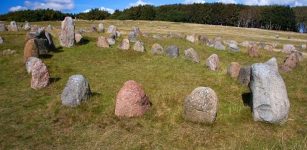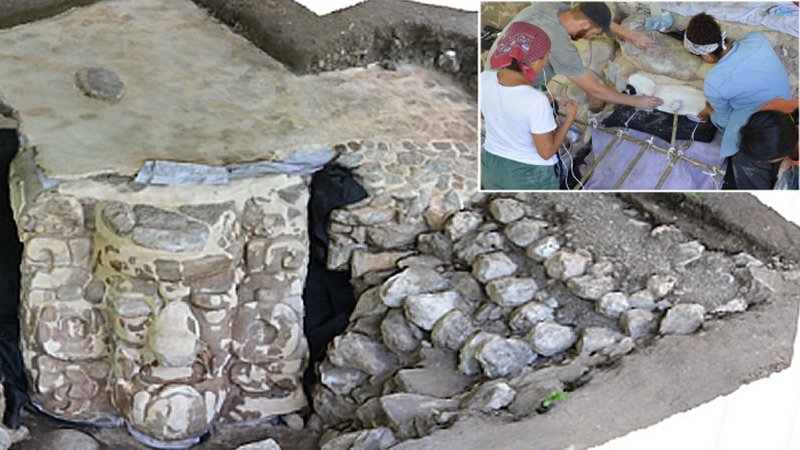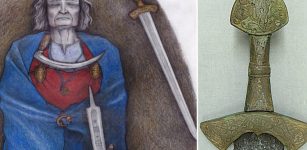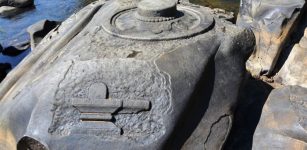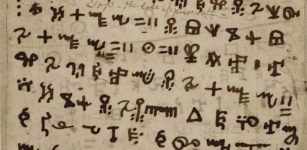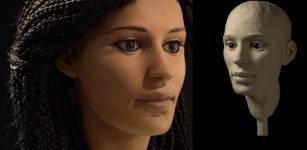Was The Mysterious Powerful Viking Warrior Buried In A Ship In Scottish Highlands A Woman?
MessageToEagle.com – Some years ago, archaeologists uncovered beautifully preserved, 1,000-year-old Viking boat burial in Scottish Highlands. It is today known as the Ardnamurchan boat burial.
Inside a 5m-long grave that contained the remains of a powerful, high-status Viking, who was buried with an axe, a sword with a beautifully decorated hilt, a spear, shield boss and bronze ring-pin. Now a new detailed study of the Viking grave has raised the remarkable possibility the body belongs to a female warrior rather than a male.
In Norse mythology, there are several references to mythical female warriors known as Shieldmaidens who may have been the basis for the mythical ‘Valkyries.’
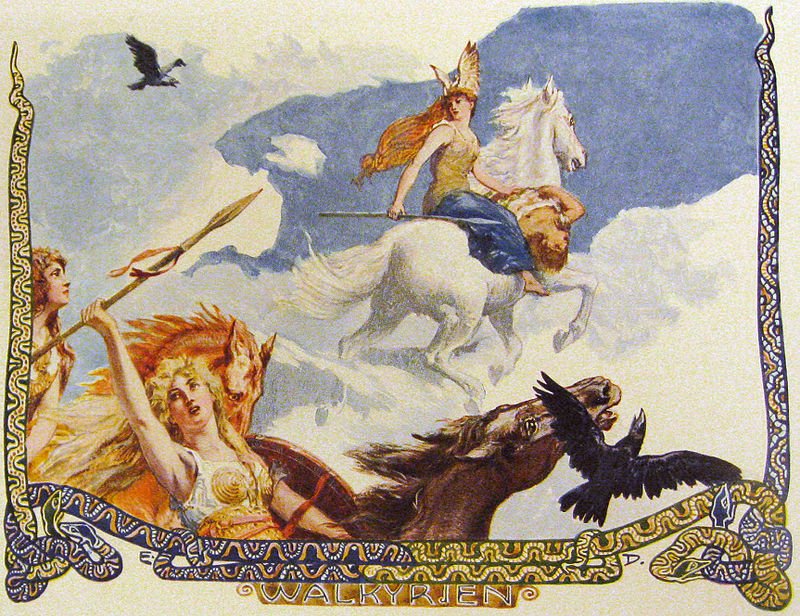
Nevertheless, the existence of female Viking warriors is heavily debated. Is it possible a Shieldmaiden was put to rest in Scotland?
New Light On The Viking Boat Burial In Scotland
The recent examination of the Viking boat burial at Swordle Bay shed more light, not only on the mysterious Viking warrior, but also how people during the period lived and interacted. The grave is thought to date from around 1,000AD at the height of the ‘Second Viking Age’.
The recent findings, published in the journal Antiquity, suggest that the individual interred at the site was of possible Scandinavian origin, while Irish and Scandinavian goods were found at the site, showing a broad geographical connection.
Objects found at the site – including a sword, spearhead and 213 of the boat’s rivets – indicate that the warrior was likely of a high status, with other objects at the site implying connections to daily life, cooking, work, farming and food production.
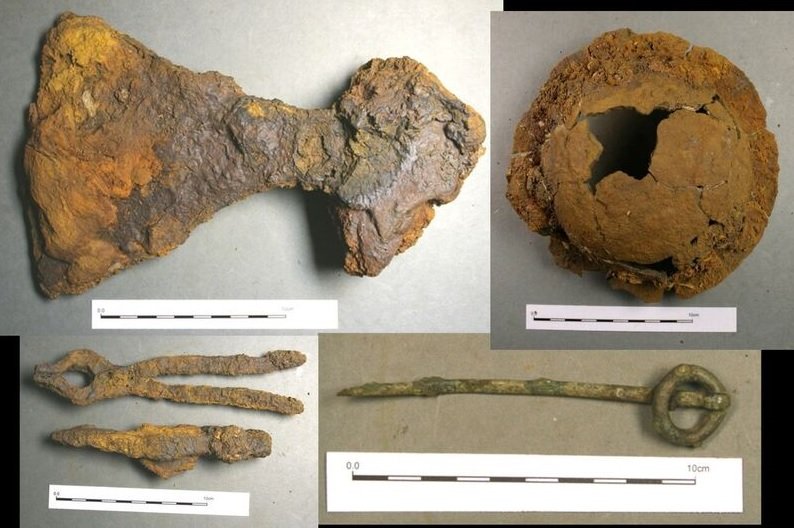
The archaeologists suggest that the burial site itself is rich in symbolic associations, being close to a Neolithic burial cairn, the stones of which may have been incorporated into the Viking grave.
See also:
Mysterious And Powerful Valkyries In Norse Mythology: The Choosers Of The Slain
Oseberg Ship: Astonishingly Well-Preserved Viking Burial Ship
Mystery Of Viking Ruler Rollo Continues – Surprising Discovery In Ancient Grave
1,000-Year-Old Tomb Of Famous Viking Warrior, Ulv Galiciefarer May Have Been Unearthed
Explore The Mysterious Ancient World Of The Vikings
“The Ardnamurchan boat burial represents the first excavation of an intact Viking boat burial by archaeologists on the UK mainland and provides a significant addition to our knowledge of burial practices from this period.
The findings suggest a connection between Scandinavia and Ireland in the objects found, as well as information about the history of diet of the person buried here and their connections away from Swordle Bay,” Dr Oliver Harris from the School of Archaeology and Ancient History said.
Was The Viking Warrior A Woman?
Many historians argue that there isn’t enough hard evidence of the training and battling of female Vikings to conclude that they existed.
According to scientists the sword and other grave goods might ‘traditionally suggest’ it was the burial of a man, but the research paper also says ‘any reading remains highly interpretive.”
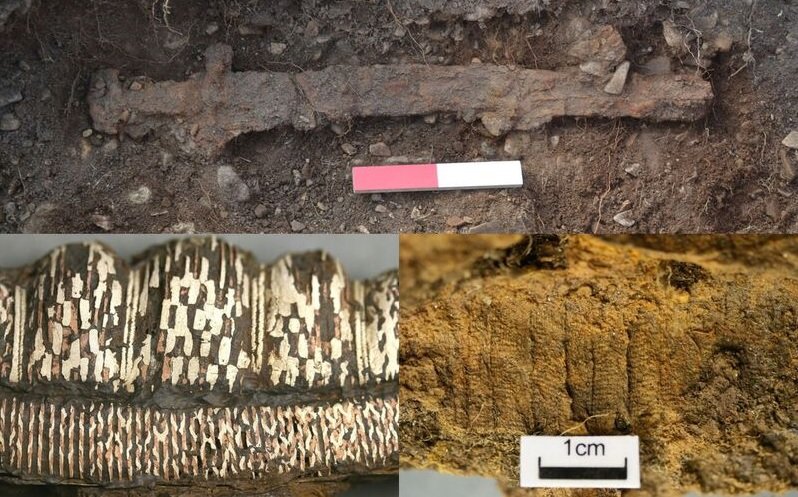
“The teeth themselves don’t gender the person at all. So at the moment, we are left looking at the artifacts.
There are more Viking burials with swords that are men than women – if you want to play a statistical game, you would say it is probably a man.
But you might choose to look at other grave goods, like the ladle or pan or sickle that don’t necessarily send the same kind of message,” Dr. Harris said.
The Viking Warrior Was A Warrior An Extensive Traveler
Whether a woman or a man was buried in the grave is unknown, but artifacts revealed the person was an extensive traveler. The artifacts in the grave are a mix of Scandinavian and Irish goods.
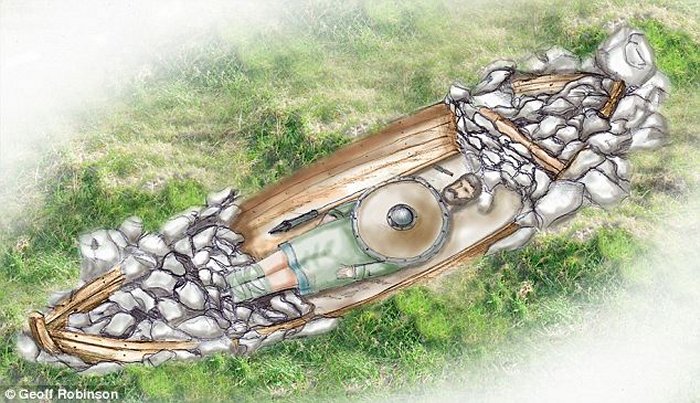
“The findings suggest a connection between Scandinavia and Ireland in the objects found, as well as information about the history of diet of the person buried here and their connections away from Swordle Bay,” Dr. Harris said.
The discovery of the Viking boat burial is highly significant discovery and can shed new light on Viking history in Scotland, UK and Ireland.
Ancient Viking funeral traditions and rituals were very complex.
The Vikings had no religion but they had customs, practices and beliefs. As in many other ancient civilizations, Vikings developed a highly class conscious and hierarchical society. Many relics in ancient tombs reveal that the type of burial a Viking received depended on his importance in the society. When a Viking died he could either be buried or burned.
Very few remains of Viking ships have been discovered. One of the most well-preserved Viking ships is the Oseberg Ship that has been labeled as one of the finest finds of the Viking Age.
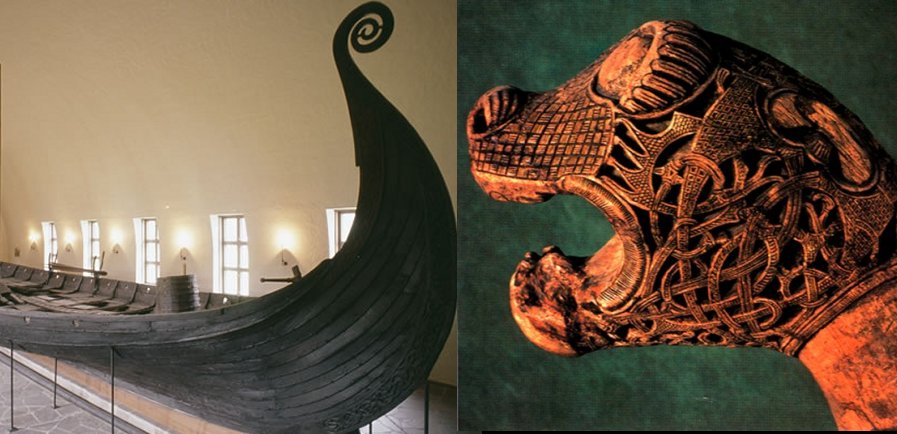
The Oseberg ship was used as a burial ship for two Viking women who died in 834. A burial chamber was dug right behind the ship’s mast. Inside, the walls were decorated with fantastic woven tapestries and the dead women lay on a raised bed.
To bury a Viking woman in a ship was by no means uncommon. So perhaps it is not far fetched to think that the Viking burial grave in the Scottish Highlands was the resting place of a Viking woman of high status.
MessageToEagle.com



